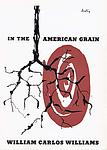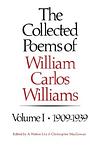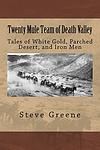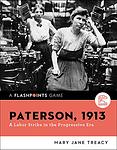William Carlos Williams
William Carlos Williams (September 17, 1883 – March 4, 1963) was an American poet and physician closely associated with modernism and imagism. He was also a pediatrician and general practitioner of medicine with his own practice. Williams 'worked harder at being a writer than he did at being a physician'; but during his long lifetime, Williams excelled at both. His most famous works include the poetry collections 'Spring and All' (1923), 'Paterson' (1946–58), and the poem 'The Red Wheelbarrow'. Williams is often credited with reinventing American poetry through his focus on local environments and everyday language.
Books
This list of books are ONLY the books that have been ranked on the lists that are aggregated on this site. This is not a comprehensive list of all books by this author.
-
1. Spring And All
The book in question is a hybrid work that combines poetry with prose, reflecting on the nature of creativity and the cycle of life. It presents a series of musings on the emergence of new life in spring, using this seasonal transformation as a metaphor for artistic innovation. The work is a seminal example of modernist experimentation, breaking with traditional forms and embracing a free verse style that captures the dynamic and often chaotic process of growth and change. Through its vivid imagery and philosophical insights, the book challenges readers to see the world with fresh eyes and recognize the potential for renewal and rebirth in the everyday.
-
2. The Doctor Stories
"The Doctor Stories" is a collection of short narratives that offer a glimpse into the life and experiences of a physician in the early to mid-20th century. Through a series of vignettes, the book captures the human side of medicine, revealing the challenges, dilemmas, and emotional encounters between the doctor and his patients. Set against the backdrop of the American industrial landscape, the stories delve into themes of life, death, and the complexities of the human condition, all while showcasing the author's poetic sensitivity and deep empathy for the diverse individuals he serves in his medical practice.
-
3. In the American Grain
"In the American Grain" is a collection of essays that explores the history and culture of America through the lives of significant figures, such as Christopher Columbus, Abraham Lincoln, and Edgar Allan Poe. The author offers a unique perspective on these figures and events, challenging traditional narratives and interpretations. The book provides a deep analysis of American identity, emphasizing its complexity and diversity.
-
4. The Collected Poems of William Carlos Williams: 1909-1939
This collection of poems by a renowned American poet spans three decades of his work, from 1909 to 1939. The poet's unique style of imagism and modernism is evident in his vivid and concise language. His work often reflects his experiences as a physician, the realities of urban life and the natural world. This anthology showcases his evolution as a poet and his significant contribution to 20th century poetry.
-
5. White Mule
The novel follows the story of an immigrant family's struggle to adapt to life in America during the early 20th century. Focusing on the Stecher family, the narrative centers around their infant daughter, nicknamed White Mule, who symbolizes the family's resilience and determination. As they navigate the complexities of assimilation, cultural identity, and the pursuit of the American Dream, the family's experiences reflect the broader challenges faced by immigrants of that era. The book delves into themes of strength, perseverance, and the clash between old-world traditions and new-world opportunities.
-
6. Paterson
The book is an epic poem that blends the everyday lives of the city of Paterson, New Jersey, and its inhabitants with the personal reflections of the poet. It is structured in five books and a fragment of a sixth, each delving into the complex relationship between the individual and the urban environment, exploring themes of identity, modernity, and the role of the poet in society. The work is characterized by its use of collage, incorporating letters, newspaper fragments, and historical documents, creating a tapestry of voices and experiences that reflect the diversity and dynamism of American life.





